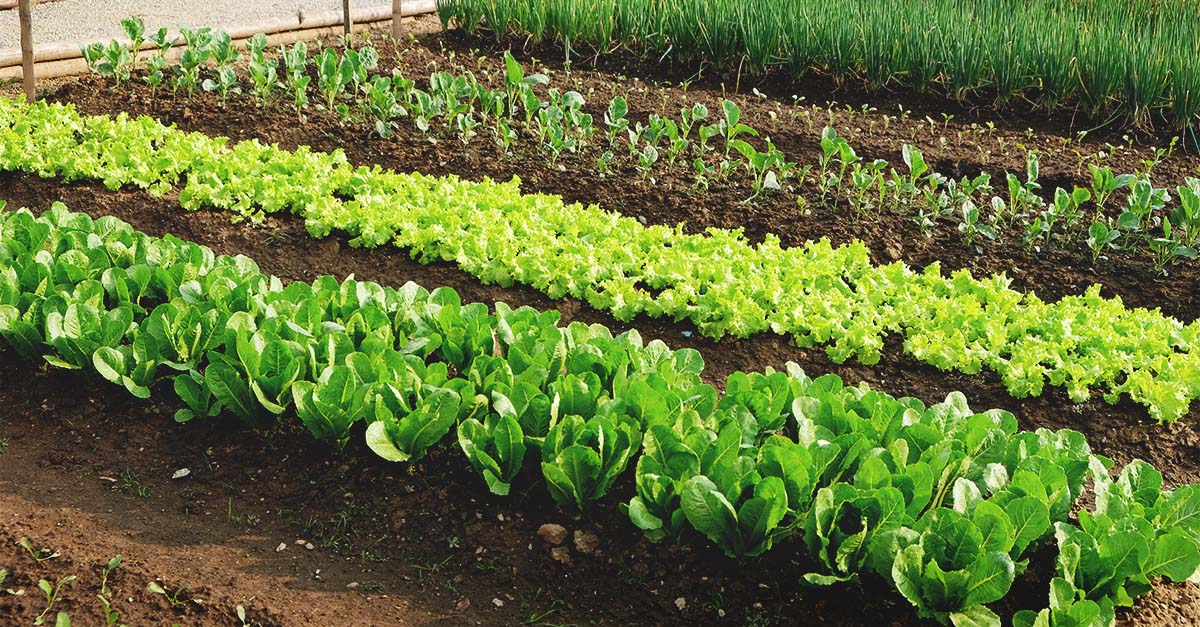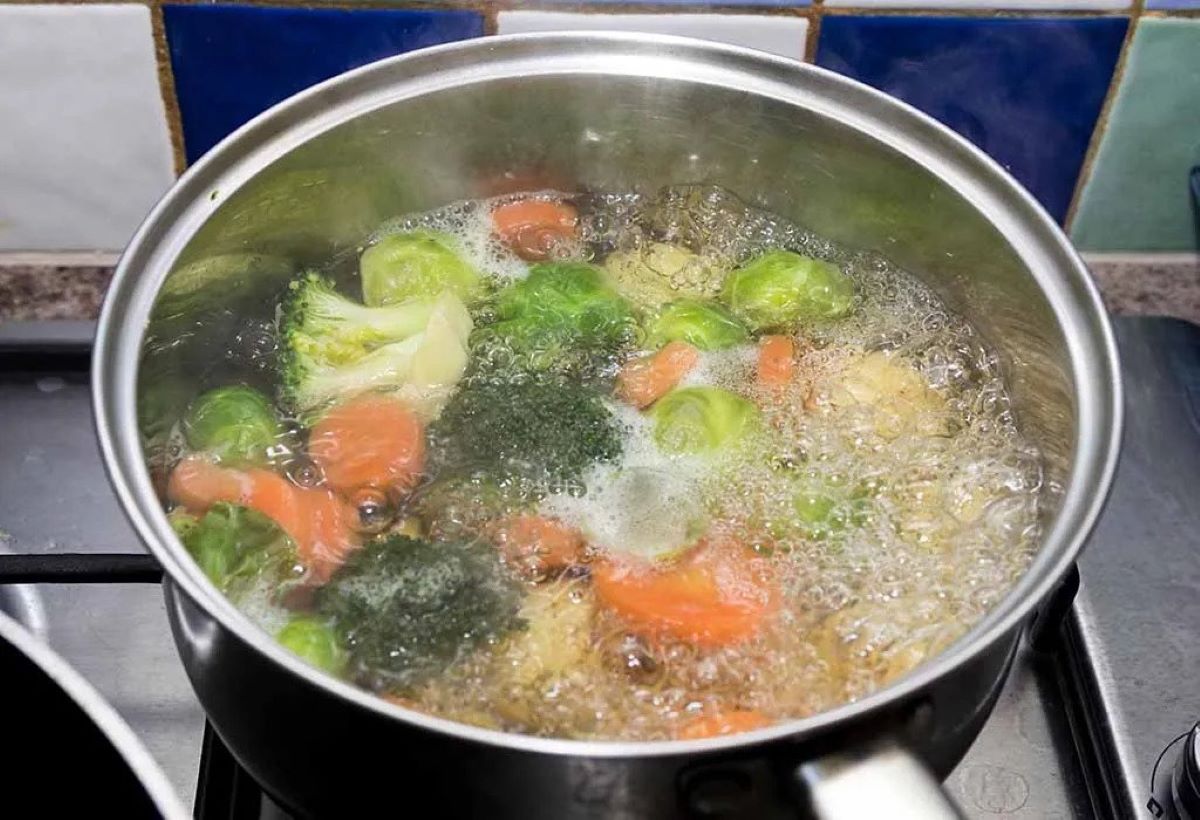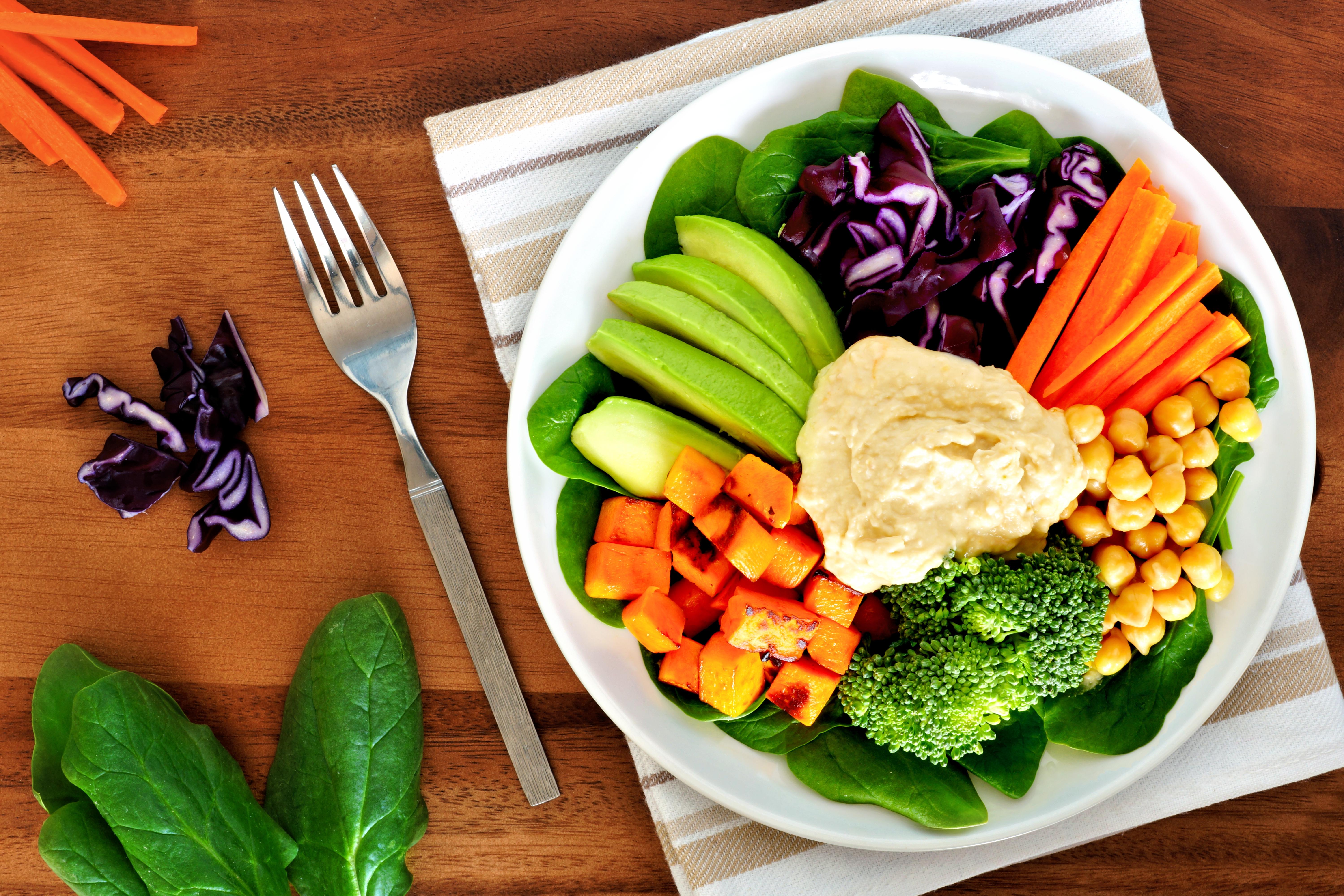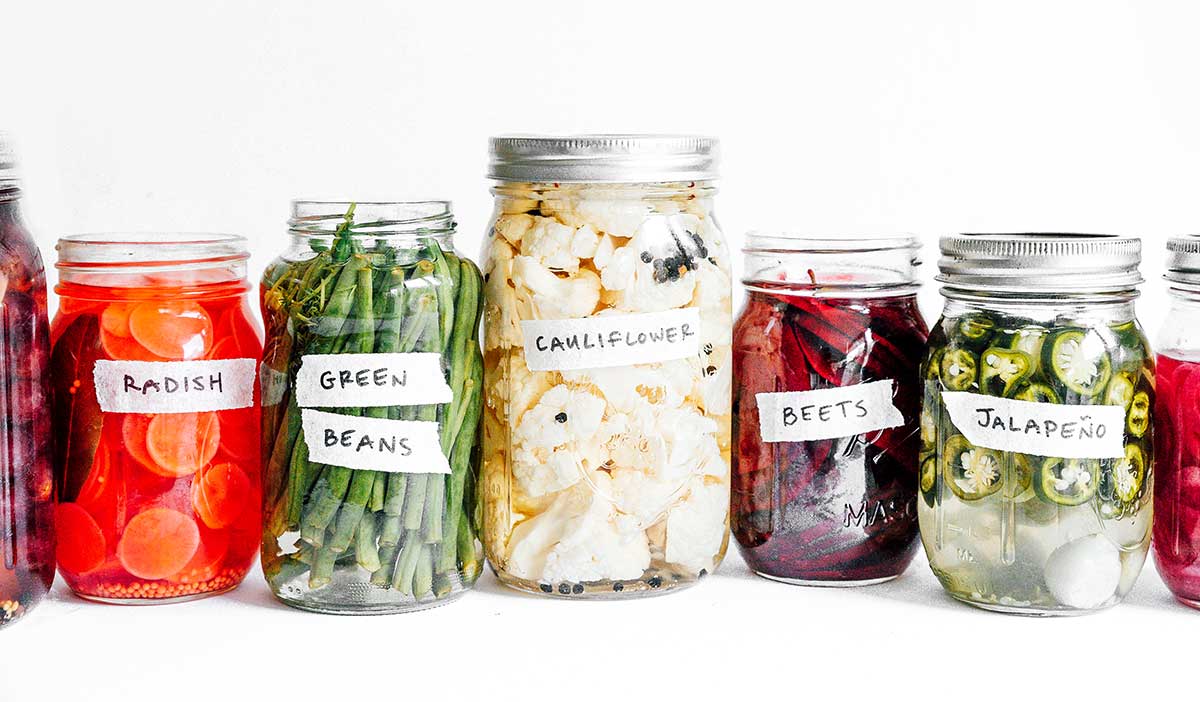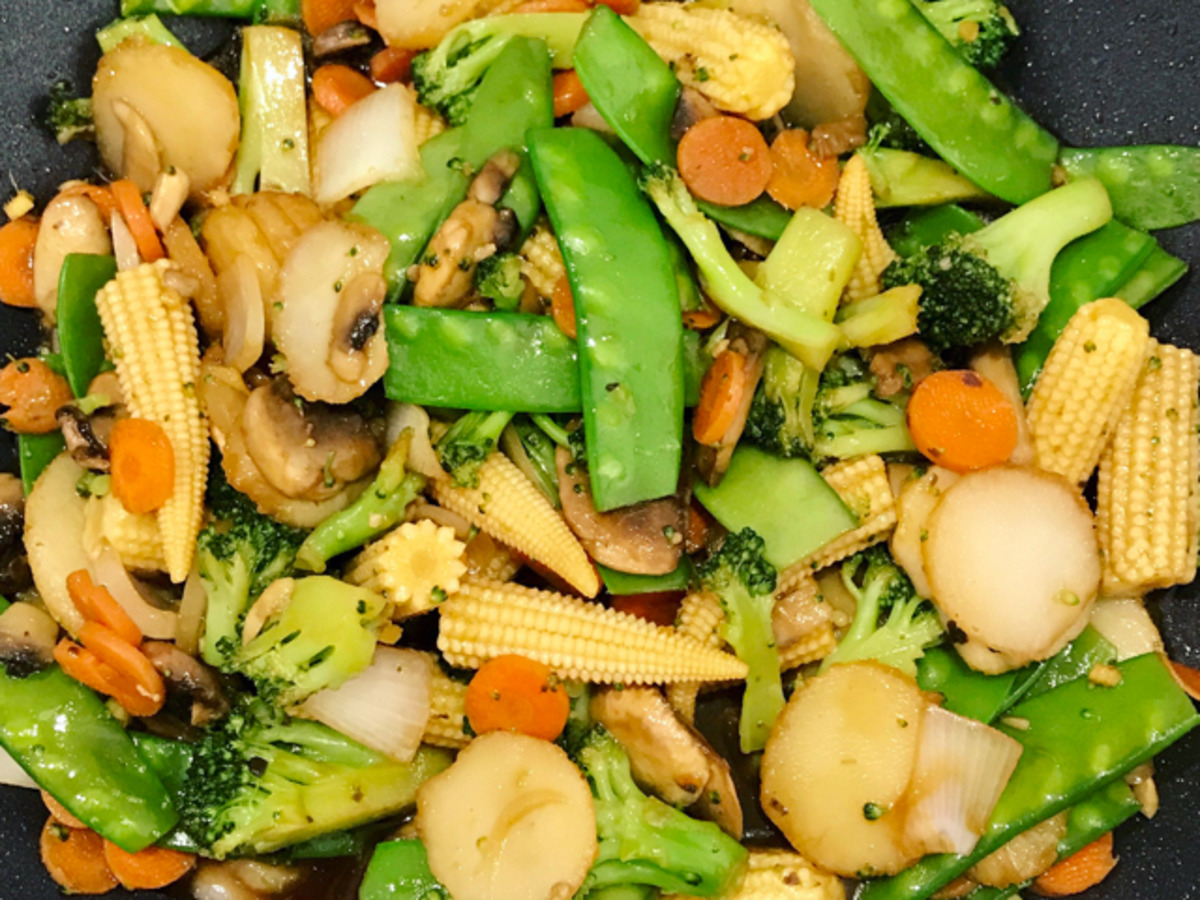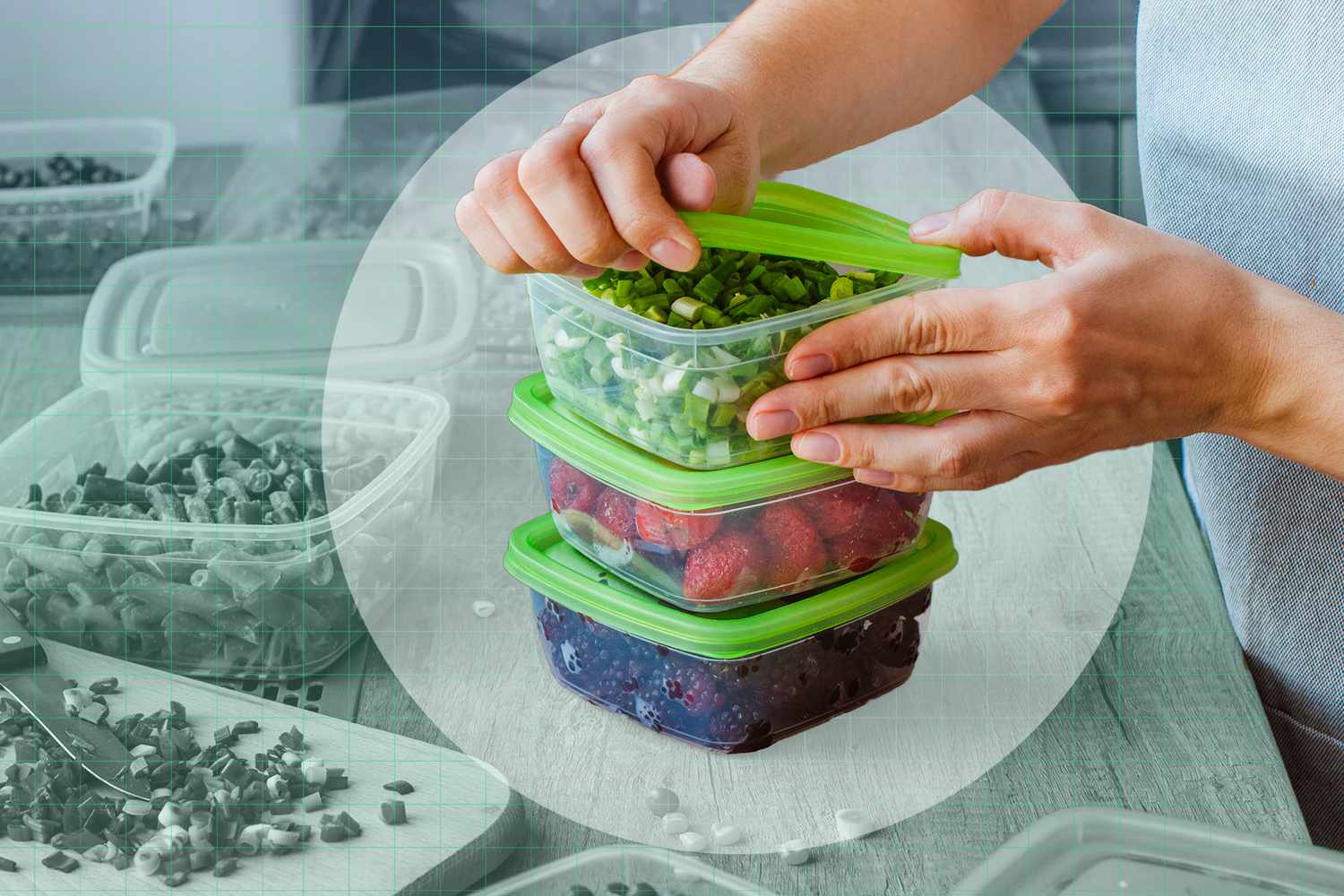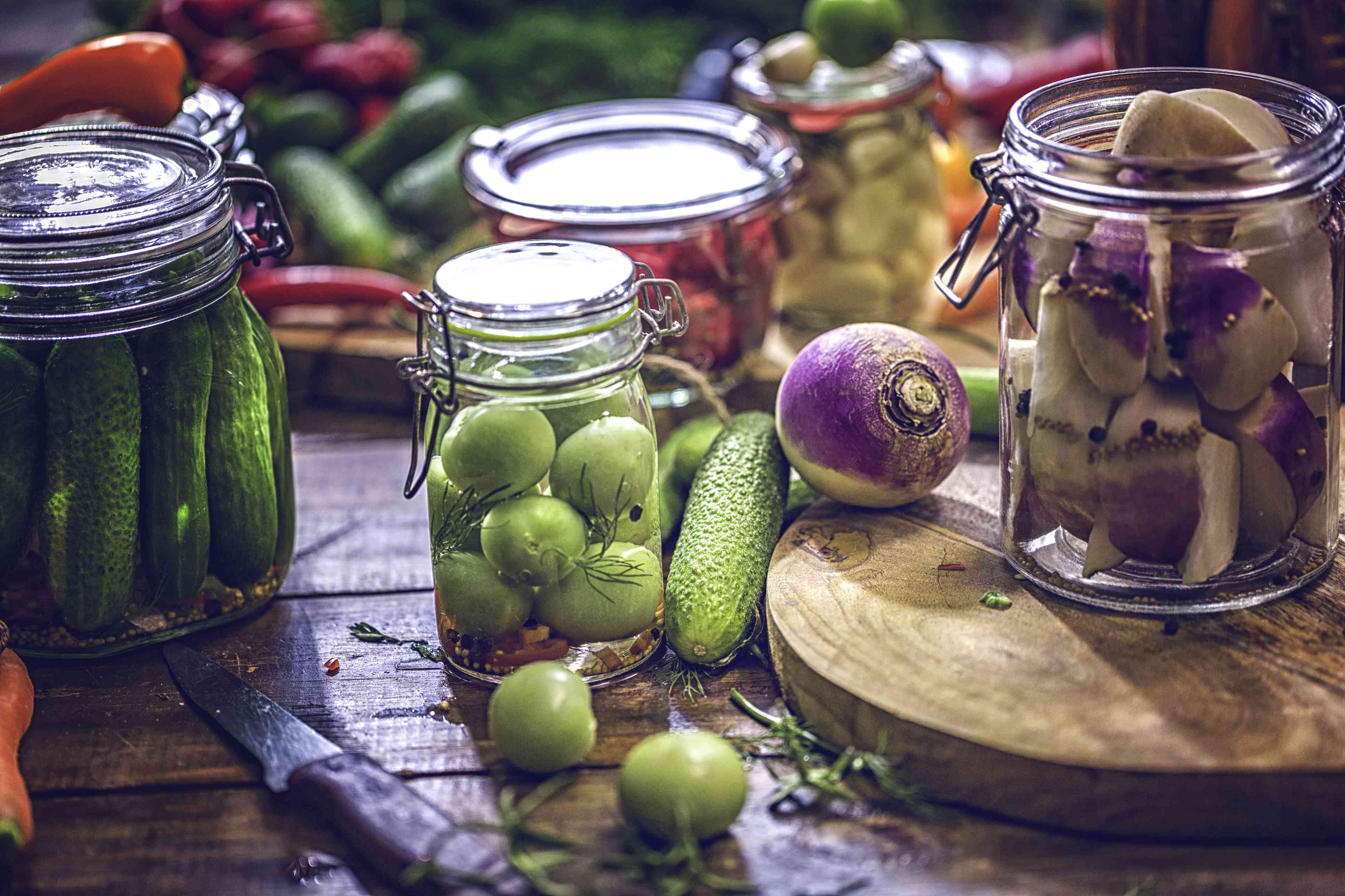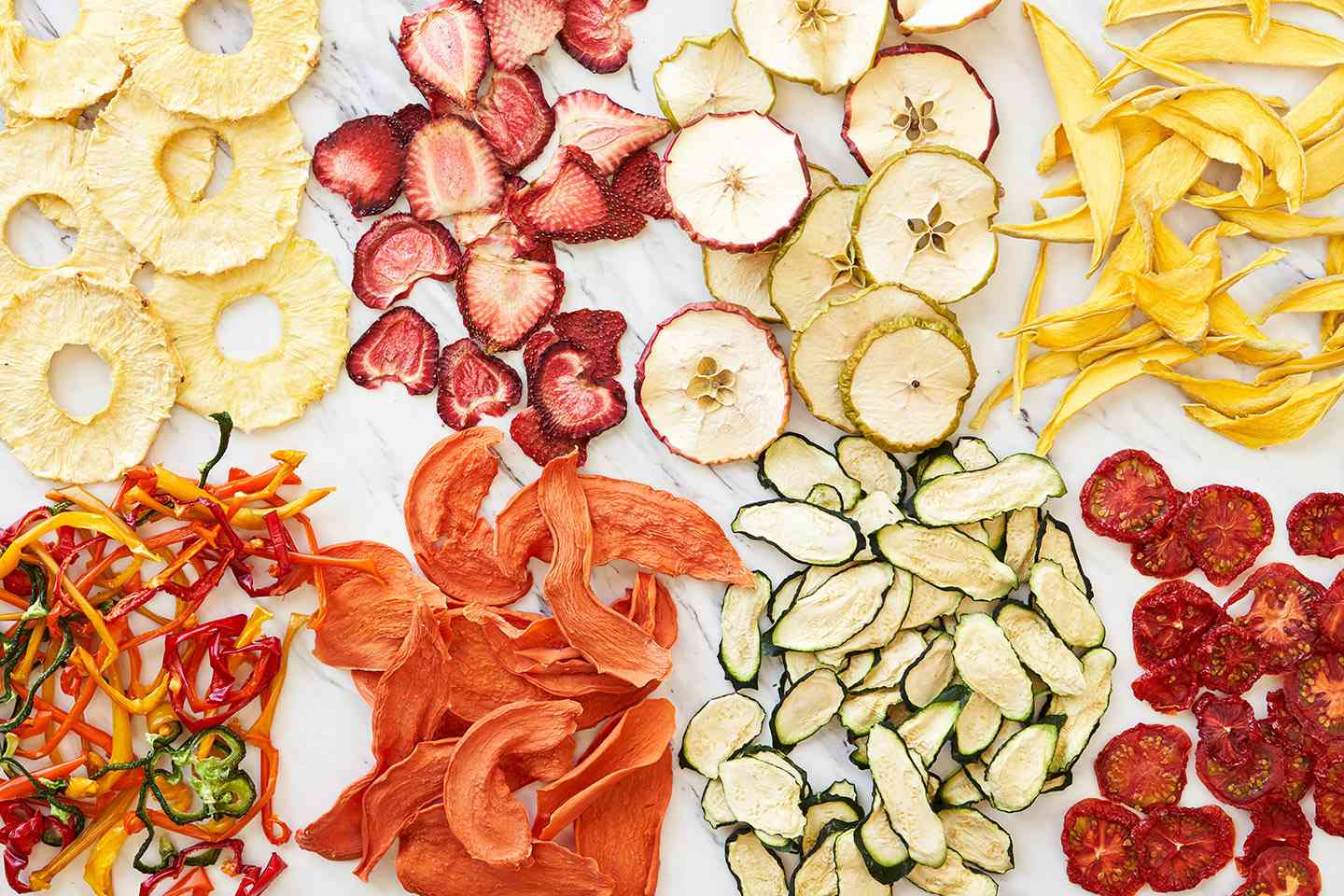Home>Gardening News and Trends>Latest News>How To Chop Vegetables
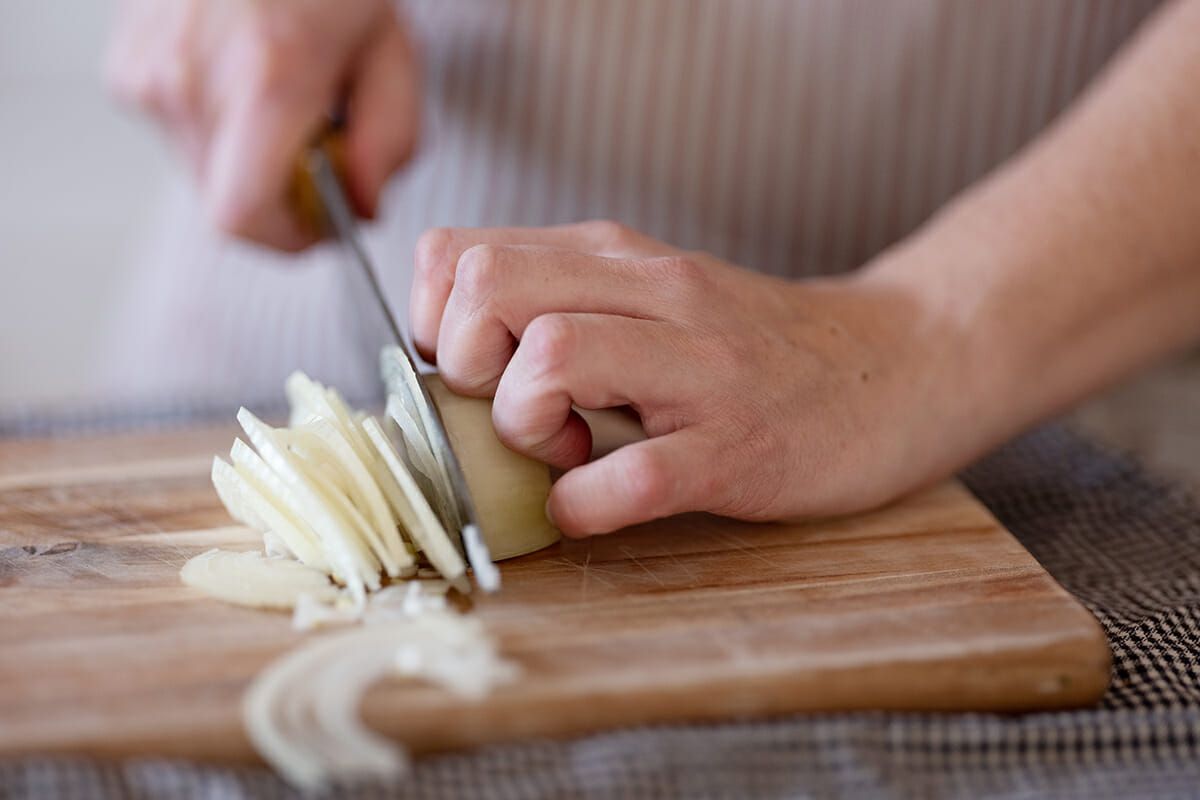

Latest News
How To Chop Vegetables
Modified: January 22, 2024
Discover the latest news and tips on how to chop vegetables like a pro! Get expert advice and learn essential techniques for a perfect chop every time.
(Many of the links in this article redirect to a specific reviewed product. Your purchase of these products through affiliate links helps to generate commission for Chicagolandgardening.com, at no extra cost. Learn more)
Table of Contents
Introduction
When it comes to cooking, chopping vegetables is an essential skill that every aspiring chef should master. Whether you’re preparing a delicious stir-fry, a fresh salad, or a comforting soup, knowing how to chop vegetables properly can make all the difference in the taste and presentation of your dish.
Chopping vegetables is not just about cutting them into smaller pieces; it’s about precision, technique, and efficiency. By using the right knife and adopting the correct chopping techniques, you can ensure that your vegetables are evenly sized, which ensures even cooking and enhances the overall visual appeal of your dish.
In this guide, we will take you through the steps of chopping vegetables like a pro. From choosing the right knife to mastering different chopping techniques for various types of vegetables, we will cover it all. Whether you’re a beginner in the kitchen or someone looking to sharpen their skills, this article will provide you with the knowledge and confidence to chop vegetables like a pro.
So, let’s sharpen our knives and dive into the art of vegetable chopping!
Choosing the Right Knife
Before you start chopping vegetables, it’s essential to have the right knife in your arsenal. While any sharp knife can get the job done, certain knives are better suited for chopping vegetables. Here are a few factors to consider when choosing the right knife for vegetable chopping:
- Blade Type: A chef’s knife or a santoku knife is ideal for vegetable chopping. These knives have a broad blade and a sharp, tapering edge, allowing for precise and efficient chopping.
- Size and Weight: Choose a knife that feels comfortable in your hand. The size and weight should be balanced, ensuring control and ease of use during chopping.
- Sharpness: A sharp knife is crucial for clean and effortless chopping. Dull knives can be dangerous and can result in uneven cuts.
- Handle: Look for a knife with a comfortable handle that provides a secure grip. A handle made of durable material like wood or plastic is recommended.
Remember, investing in a good quality knife can make a significant difference in your chopping experience and the outcome of your dishes. Take the time to research and choose a knife that suits your needs and preferences.
Once you have the appropriate knife, it’s time to set up your workspace for efficient vegetable chopping.
Preparing the Workspace
Preparing your workspace before you start chopping vegetables is essential for efficiency and safety. Here are some steps to follow to create an ideal chopping environment:
- Clean and Clear: Ensure that your countertop is clean and free from any clutter. Remove any appliances, utensils, or other objects that may hinder your workspace.
- Secure Cutting Surface: Place a cutting board on your countertop. Choose a cutting board that is sturdy, non-slip, and large enough to accommodate the vegetables you’ll be chopping.
- Proper Lighting: Make sure your workspace is well-lit. Sufficient lighting will enable you to see the vegetables clearly and prevent any accidents.
- Organize Ingredients: Before you start chopping, gather all the vegetables you’ll be working with. Rinse and dry them if necessary. Having them nearby and organized will help streamline your chopping process.
- Keep a Trash Bowl Nearby: Place a small bowl or garbage bin near your workspace. This will make it easy for you to discard vegetable scraps and trimmings while you chop, keeping your workspace clean and tidy.
By taking the time to prepare your workspace, you will have a clean and organized area to work in. This will not only make the chopping process more efficient but also minimize the risk of accidents or injuries. With your workspace ready, it’s time to learn some basic vegetable chopping techniques.
Basic Vegetable Chopping Techniques
Mastering basic vegetable chopping techniques will lay a solid foundation for your culinary skills. Here are a few techniques to get you started:
- Dice: To dice vegetables, start by cutting them into slices of equal thickness. Then, stack the slices and cut them into sticks of the desired width. Finally, gather the sticks and chop them crosswise to achieve evenly sized cubes.
- Mince: Mincing involves finely chopping vegetables into tiny pieces. Begin by cutting the vegetable into thin slices. Then, gather the slices and chop them into small, uniform pieces. Use a rocking motion with your knife to achieve the desired texture.
- Julienne: Julienne is a technique used to create long, thin strips. Start by cutting the vegetable into slices of equal thickness. Then, stack the slices and cut them into thin matchstick-like strips.
- Batonnet: Batonnet is similar to julienne but involves creating thicker strips. Begin by cutting the vegetable into slices of equal thickness. Then, stack the slices and cut them into rectangular sticks of the desired width.
- Chiffonade: Chiffonade is commonly used for leafy vegetables like lettuce or spinach. Stack the leaves on top of each other, roll them tightly, and slice across the roll to create thin ribbons.
Remember, practice makes perfect. Take your time, focus on your technique, and aim for consistent and uniform cuts. As you gain more experience, you can explore different variations and adapt these techniques to suit various recipes and vegetable types.
Next, let’s delve into specific chopping techniques for different types of vegetables.
Chopping Leafy Vegetables
Leafy vegetables, such as spinach, kale, or lettuce, require a slightly different approach when it comes to chopping. Here’s how to effectively chop leafy vegetables:
- Wash and Dry: Begin by thoroughly washing the leafy vegetables under cold water to remove any dirt or debris. Pat them dry with a clean kitchen towel or use a salad spinner to remove excess moisture.
- Remove Stems: If the leafy vegetable has thick stems, like kale or Swiss chard, it’s best to remove them. Hold the stem with one hand and slide your other hand along the stem, gently pulling the leaves off.
- Stack and Roll: Stack a few leaves on top of each other. Roll them tightly into a cigar-like shape, starting from one end to the other. This will make it easier to chop them into thin ribbons.
- Chop into Ribbons: Using a sharp knife, start cutting across the rolled leaves to create thin ribbons. Work your way through the roll, keeping your fingers safely tucked away from the blade.
Chopped leafy vegetables are versatile and can be used in salads, stir-fries, soups, or even as a garnish. Remember to adjust the size of the ribbons according to your recipe’s requirements.
Now that you’ve mastered chopping leafy vegetables, let’s move on to chopping root vegetables.
Chopping Root Vegetables
Root vegetables like carrots, potatoes, or onions require a slightly different approach when it comes to chopping due to their shape and texture. Here’s how to effectively chop root vegetables:
- Peel and Wash: Start by peeling the skin of the root vegetable using a peeler or a knife. Rinse the vegetable under cold water to remove any residual dirt.
- Trim Ends: Trim off any uneven or damaged ends of the vegetable using a knife. This will ensure a clean and uniform chopping process.
- Halve or Quarter: Depending on the size and shape of the root vegetable, you may need to halve or quarter it. This will make it more manageable and ensure even cooking.
- Stabilize the Vegetable: Place the flat side of the root vegetable down on the cutting board to stabilize it. This will make it safer and easier to chop.
- Chop into Desired Shape: Depending on your recipe, chop the root vegetable into slices, cubes, or any other desired shape. Use a steady, downward motion with your knife to achieve precise and even cuts.
Chopped root vegetables can be used in an array of dishes, such as roasted vegetables, stews, or gratins. Adjust the size and shape of the cuts based on your recipe’s requirements and your personal preference.
Now that you know how to chop root vegetables, let’s move on to the technique of chopping bulb vegetables.
Chopping Bulb Vegetables
Bulb vegetables, including onions, garlic, or fennel, have a distinct shape and require specific techniques when it comes to chopping. Here’s how to effectively chop bulb vegetables:
- Prepare the Vegetable: Remove any loose outer layers or damaged parts of the bulb vegetable. Trim off the stem and root ends to create a stable base for chopping.
- Halve or Quarter: Depending on the size of the bulb and your recipe’s requirements, halve or quarter the vegetable. This will make it easier to handle and chop.
- Peel (If Necessary): For bulb vegetables like garlic or onions, peel off the skin before chopping. This will ensure a clean and uniform texture in your dishes.
- Make Slits: Using a sharp knife, make vertical or horizontal slits into the bulb vegetable. Leave the root end intact to hold the vegetable together during chopping.
- Chop into Desired Shape: Depending on your recipe, chop the bulb vegetable into slices, cubes, or finely chop it. Use a rocking motion with your knife to achieve precise and even cuts.
Chopped bulb vegetables are used as flavor enhancers in a wide range of dishes, including soups, stir-fries, and sauces. Adjust the size and shape of the cuts based on your recipe’s requirements and the desired intensity of flavor.
Now that you’re familiar with chopping bulb vegetables, let’s move on to the technique of chopping cylindrical vegetables.
Chopping Cylindrical Vegetables
Cylindrical vegetables like cucumbers, zucchini, or carrots require specific techniques to achieve consistent and visually pleasing cuts. Here’s how to effectively chop cylindrical vegetables:
- Wash and Dry: Start by rinsing the cylindrical vegetable under cold water to remove any dirt or debris. Pat it dry with a clean kitchen towel.
- Trim the Ends: Trim off both ends of the vegetable using a knife. This will ensure a clean and uniform chopping process.
- Cut into Even Sections: Depending on the length and your recipe’s requirements, cut the vegetable into smaller, even sections. This will make it more manageable for chopping.
- Create a Flat Surface: Place one of the cut sections on the cutting board, flat-side down. This will provide stability and make it easier to cut the vegetables into uniform pieces.
- Chop into Desired Shape: Depending on your recipe, chop the cylindrical vegetable into slices, half-moons, or any other desired shape. Use a steady, downward motion with your knife to achieve precise and even cuts.
Chopped cylindrical vegetables can be used in salads, stir-fries, sautés, or simply enjoyed as a crunchy snack. Adjust the size and shape of the cuts based on your recipe’s requirements and your personal preference.
Now that you’ve learned how to chop cylindrical vegetables, let’s move on to some tips for efficient vegetable chopping.
Tips for Efficient Vegetable Chopping
Now that you have learned various chopping techniques for different types of vegetables, here are some additional tips to make your vegetable chopping experience more efficient and enjoyable:
- Keep Your Knife Sharp: A sharp knife makes chopping easier and safer. Regularly sharpen your knife to maintain its cutting edge.
- Practice Knife Skills: Take some time to practice your knife skills. The more you practice, the more confident and efficient you will become.
- Maintain a Stable Cutting Surface: Place a damp kitchen towel or a non-slip mat under your cutting board to prevent it from sliding during chopping.
- Use Proper Hand Positioning: Hold the vegetable with your non-dominant hand in a claw-like grip, keeping your fingertips tucked away from the blade.
- Take Breaks: If you’re chopping a large quantity of vegetables, take regular breaks to rest your hands and prevent fatigue.
- Organize Your Chopped Vegetables: Use separate bowls or containers to keep different chopped vegetables organized and easily accessible.
- Use a Food Processor or Mandoline for Uniform Cuts: For recipes that require uniform cuts, consider using a food processor or a mandoline to achieve consistent results.
- Keep Your Workspace Clean: As you chop, periodically clear away any vegetable scraps or trimmings to maintain a clean and clutter-free workspace.
- Experiment with Seasonal Vegetables: Explore different types of vegetables throughout the year to expand your culinary skills and discover new flavors.
Remember, chopping vegetables is not just a task; it’s an opportunity to connect with your ingredients and unleash your creativity in the kitchen.
By following these tips, you can enhance your vegetable chopping skills and make the process more efficient and enjoyable. So, get ready to chop away and create delicious and visually appealing dishes.
Conclusion
Congratulations! You have now learned the essential skills and techniques to chop vegetables like a pro. By choosing the right knife, preparing your workspace, and mastering various chopping techniques, you can elevate your culinary creations to new heights.
Remember, chopping vegetables is not just about cutting them into smaller pieces; it’s about precision, technique, and efficiency. Take the time to practice and sharpen your skills, and you’ll soon find that chopping vegetables becomes second nature.
Whether you’re dicing onions, julienning carrots, or chiffonading lettuce, each technique adds its own flair to your dishes. The size and shape of your cuts will influence the taste, texture, and visual appeal of your meals.
So, sharpen your knives, prepare your workspace, and let your creativity flow as you chop and transform fresh vegetables into vibrant, delicious meals. With practice, you’ll gain confidence and develop your unique chopping style.
Continue to explore new vegetables, experiment with different recipes, and expand your culinary horizons. Remember, the art of vegetable chopping is a lifelong skill that will serve you well in the kitchen.
Now, armed with your chopping skills, go forth and create tasty dishes that showcase the beauty and flavor of freshly chopped vegetables. Happy chopping!

